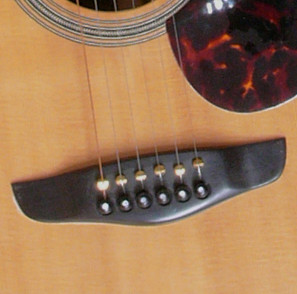| Author |
Topic: Nashville Tuning and Other Tricks |
Tim Kowalski
From:
Illinois, USA
|
 Posted 26 Feb 2019 1:02 pm
Posted 26 Feb 2019 1:02 pm |
|
I have been messing around with Nashville tuning on a song that I am recording. For those not familiar with this, it is simply replacing the top 4 strings (EADG)of a 6 string guitar with lighter gauges (like the octave strings on a 12 string) and tuning those strings one octave higher.
I record both a NT track and a standard tuning track, then pan one hard right and one hard left in the mix. It creates a nice presence and separation. Full and chimey!
You can buy the correct gauges as a set called Nashville Tuning or High Strung. The bad part is that you should do a new setup on the guitar if you want the intonation to be correct. That's kind of important, but if you aren't playing up and down the neck you can probably get away without a setup.
I wish that I had tried this a long time ago - it is so cool.
Does anyone have other simple tricks that yield big results?
Does anyone use NT on their tracks?
_________________
Bad wine is better than no wine. |
|
|
 |
John Macy
From:
Rockport TX/Denver CO
|
 Posted 26 Feb 2019 3:47 pm
Posted 26 Feb 2019 3:47 pm |
|
I've always had a hi strung or "angel hair" guitar ready at all times at my studios. I like a L/R doubled regular acoustic with a hi strung in the center. Another nice one is swapping out the G string only with an octave up, often called a “hi third” acoustic. Puts a little touch of air in the tuning. Another nice thing about a hi strung is while it has to be properly intonated, there is really no low end to speak of in the guitar, so it doesn't have to be an incredible guitar. Mine is an early US made Sigma, and it sounds and records great. Used to see a lot of Fender Shenandoah's used as hi strings in Nashville...
_________________
John Macy
Rockport, TX
Engineer/Producer/Steel Guitar
Last edited by John Macy on 26 Feb 2019 8:14 pm; edited 1 time in total |
|
|
 |
Greg Cutshaw
From:
Corry, PA, USA
|
 Posted 26 Feb 2019 6:31 pm
Posted 26 Feb 2019 6:31 pm |
|
| I've have good luck just using a capo on a standard acoustic guitar or at times using a mandolin which creates a super high and clear track. |
|
|
 |
Jeremy Reeves
From:
Springfield, IL, USA
|
 Posted 26 Feb 2019 6:57 pm
Posted 26 Feb 2019 6:57 pm |
|
| I’ve used Nashville tuning on a strat before. The E’s were unisons. Sounded great! |
|
|
 |
Jack Stoner
From:
Kansas City, MO
|
 Posted 27 Feb 2019 3:17 am
Posted 27 Feb 2019 3:17 am |
|
When I was there, they would just change the G string on an acoustic guitar to a .010 and tune it up an octave. Play open chords and you get a sort of 12 string sound.
Lots of sessions used that on their recordings. |
|
|
 |
Ken Morgan
From:
Midland, Texas, USA
|
 Posted 27 Feb 2019 4:46 pm
Posted 27 Feb 2019 4:46 pm |
|
When I was “doing this” I tended to put a high strung on most things...the particular instrument I have is a Martin Shenandoah D1932...
To maintain tuning stability I did have the nut slots resized on the new octave strings - really makes a difference
_________________
67 Shobud Blue Darling III, scads of pedals and such, more 6 strings than I got room for
Ken Morgan
Midland, TX |
|
|
 |
Per Berner
From:
Skovde, Sweden
|
 Posted 4 Apr 2019 4:41 am
Posted 4 Apr 2019 4:41 am |
|
I've got a self-built OM-sized guitar with individual, cylindrical brass saddles. By carefully caculating the optimal positions of each saddle and shaping them with peaks off center, I am now able to switch between correct intonation for regular strings and hi-strung, just by turning some of the the saddles 180 degrees. I designed it that way beacuse I didn't want to build a dedicated hi-strung guitar in case I would change my mind later. And it works perfectly!

Last edited by Per Berner on 4 Apr 2019 5:27 am; edited 2 times in total |
|
|
 |
Greg Cutshaw
From:
Corry, PA, USA
|
|
|
 |




